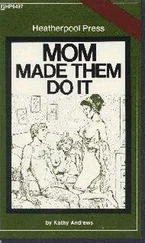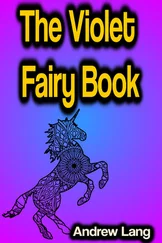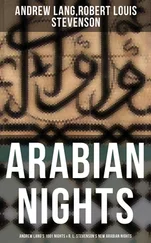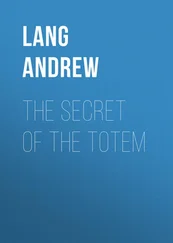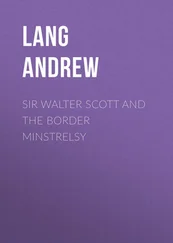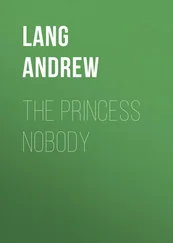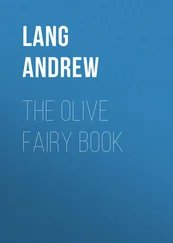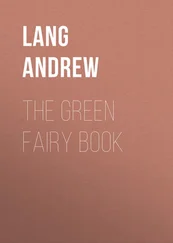Andrew Lang - Method in the Study of Totemism
Здесь есть возможность читать онлайн «Andrew Lang - Method in the Study of Totemism» — ознакомительный отрывок электронной книги совершенно бесплатно, а после прочтения отрывка купить полную версию. В некоторых случаях можно слушать аудио, скачать через торрент в формате fb2 и присутствует краткое содержание. Жанр: foreign_antique, foreign_prose, на английском языке. Описание произведения, (предисловие) а так же отзывы посетителей доступны на портале библиотеки ЛибКат.
- Название:Method in the Study of Totemism
- Автор:
- Жанр:
- Год:неизвестен
- ISBN:нет данных
- Рейтинг книги:4 / 5. Голосов: 1
-
Избранное:Добавить в избранное
- Отзывы:
-
Ваша оценка:
- 80
- 1
- 2
- 3
- 4
- 5
Method in the Study of Totemism: краткое содержание, описание и аннотация
Предлагаем к чтению аннотацию, описание, краткое содержание или предисловие (зависит от того, что написал сам автор книги «Method in the Study of Totemism»). Если вы не нашли необходимую информацию о книге — напишите в комментариях, мы постараемся отыскать её.
Method in the Study of Totemism — читать онлайн ознакомительный отрывок
Ниже представлен текст книги, разбитый по страницам. Система сохранения места последней прочитанной страницы, позволяет с удобством читать онлайн бесплатно книгу «Method in the Study of Totemism», без необходимости каждый раз заново искать на чём Вы остановились. Поставьте закладку, и сможете в любой момент перейти на страницу, на которой закончили чтение.
Интервал:
Закладка:
Again (category 5), in British Columbia, "Magical Ceremonies are not associated with Totemism." In Central Australia they are "intimately associated with totemism." Yes, but in South-Eastern Australia they are not, as far as our evidence informs us. Magical ceremonies are not in Mr. Goldenweizer's list of five symptoms or characteristic peculiarities of totemism, so I leave them out of account.
Again, as to Taboo (category 3), in British Columbia, "non-totemic taboo is common; totemic, absent."
As to this "absence," Mr. Frazer has a great deal to say. For example, we have Commander Mayne's book, Four Years in British Columbia , a work of 1862, in which is given information from Mr. William Duncan, a missionary among the Tsimshian tribe. All such evidence given prior to controversies about totemism is valuable. According to this account, the Indians used, as "crests," representations of Whale, Porpoise, Eagle, Raven, Wolf, Frog, etc. Every person was obliged to marry out of the name of the animal represented by his crest, and each "clan" tabooed its animal, "will never kill the animal which he has adopted for his crest, or which belongs to him as his birthright," that is, apparently, his "familiar," and his inherited totem. This is original totemism in North-West America.
Mr. Frazer says, "So far as I remember, no other writer on these North-Western Indians has mentioned their reluctance to kill their totemic animals. In the course of this work I have repeatedly called attention to the paucity of information on this important side of totemism in the writings of American ethnologists." 11 11 Totemism and Exogamy , vol. iii. pp. 309-311.
Mr. Frazer also finds the usual totemic taboo among the Yuchi, a tribe of the Gulf nations. 12 12 F. G. Speck, Ethnology of the Yuchi Indians , Philadelphia, 1909, pp. 70 sq. Totemism and Exogamy , vol. iv. p. 312, cf. vol. iii. p. 181.
In Central Australia are "numerous totemic and non-totemic taboos." But in other parts of Australia there are also tribes where people even kill and eat their totems. The totemic taboo is an extremely common institution, but not a note stantis vel cadentis ecclesiae .
Another category is (4), "Descent from the Totem." As I have said, the belief in this descent is a mere explanatory myth to account for totemism; and, like all other such myths, could only arise after men were not only totemic, but wondered why they were totemic. Consequently such myths are not of the essence of totemism, and their varieties are of no importance.
The belief, or myth, of totemic descent is absent in British Columbia, says Mr. Goldenweizer, in the Tlingit, Haida, and Tsimshian tribes, and present "among the Kwakiutl and further south." In Central Australia descent from the totem is "universal."
But it is a queer kind of "descent," is not, in the usual sense, descent at all, and, notoriously, is not descent by physical generation .
Then we have the category (7), "Guardian Spirits, intimately associated with Totemism" in British Columbia, " not associated with it in Central Australia." Yet, in Central Australia, a man's spirit is a totemic spirit. Again (10), "Number of Totems." In British Columbia "small," in Central Australia "large." But it is "small" in such central regions of Australia as those of the Dieri and Urabunna, and in South-Eastern Australia; and why it is so large among the Arunta no man knows. It is an unexplained peculiarity, and not essential.
"Reincarnation" (6) is, in British Columbia, "not associated with Totemism," in Central Australia "intimately associated with Totemism." Here, Mr. Strehlow, for the Southern Arunta, reports otherwise; while for the Northern Arunta and other tribes, this "reincarnation" is part of a speculative explanatory myth. The myth, as I can show, explains, at one stroke, how men come to have souls, and why men are totemic We know the kind of savage philosophy which accounts for this category.
I have now remarked on eight out of Mr. Goldenweizer's ten categories of differences between British Columbian and South Australian totemism; all of them, I think, are separable accidents of totemism; and most of them are easily to be accounted for by actual differences of culture, of social conditions, and by variety of savage taste and fancy in making guesses as to why totemists are totemistic.
IV
We next arrive at the two first of Mr. Goldenweizer's categories. These are concerned with points of such very wide diffusion in the totemic world that I, under correction, take leave to regard them as "normal," while I hold that such variations from the norm as exist can be explained – as aberrations.
The first of these two categories is announced as:
BRITISH COLUMBIA.
1. Exogamy
Totemic phratries (Tlingit).
Totemic clans (Haida, Tsimshian, Northern Kwakiutl).
CENTRAL AUSTRALIA.
2. Exogamy
Phratries.
Classes.
Totem clans (generally not independent exogamous units).
This needs explanation! By "totemic phratries " in the case of the Tlingits, Mr. Goldenweizer means the two main exogamous divisions of the tribe, Wolf and Raven. By "totemic clans ," in the case of the Haida, he also means the two main exogamous divisions, Raven and Eagle, which, really, are phratries. But it is also clear that Mr. Goldenweizer is here using the word "clans" as it exists in the peculiar terminology of Dr. Swanton. Mr. Goldenweizer informs us that "Dr. Swanton now fully recognises the strict parallelism of the social units of the Tlingit and Haida, and sanctions the use of 'phratry' and clan in both cases." This terminological source of confusion happily disappears.
Конец ознакомительного фрагмента.
Текст предоставлен ООО «ЛитРес».
Прочитайте эту книгу целиком, купив полную легальную версию на ЛитРес.
Безопасно оплатить книгу можно банковской картой Visa, MasterCard, Maestro, со счета мобильного телефона, с платежного терминала, в салоне МТС или Связной, через PayPal, WebMoney, Яндекс.Деньги, QIWI Кошелек, бонусными картами или другим удобным Вам способом.
1
Journal of American Folk-Lore , April-June, 1910.
2
J. A. F. p. 280
3
Secret of the Totem , p. 28.
4
J. A. F. p. 281.
5
J. A. F. p. 287.
6
J. A. F. p. 183.
7
But I exclude from my treatment of the subject, the "Matrimonial Classes," or "sub-classes" of many Australian tribes, for these are peculiar to Australia, appear to be results of deliberate conscious enactment, and, though they bear animal names (when their names can be translated), have no traceable connection with totemism.
8
J. A. F. p. 182.
9
J. A. F. p. 229. I give the tabular form in this note:
TOTEMISM IN BRITISH COLUMBIA AND CENTRAL AUSTRALIA
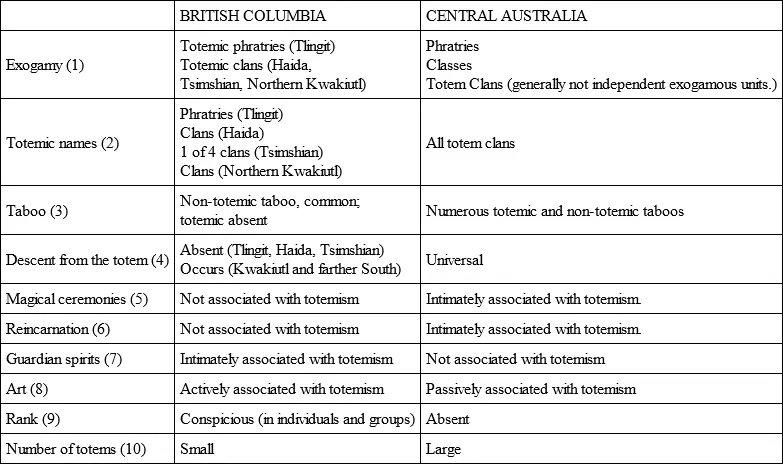
10
Franz Boas, Fifth Report of the Committee on the North-Western Tribes of Canada , p. 32, cited in Totemism and Exogamy , vol. iii. p. 319, note 2; cf. p. 321.
Читать дальшеИнтервал:
Закладка:
Похожие книги на «Method in the Study of Totemism»
Представляем Вашему вниманию похожие книги на «Method in the Study of Totemism» списком для выбора. Мы отобрали схожую по названию и смыслу литературу в надежде предоставить читателям больше вариантов отыскать новые, интересные, ещё непрочитанные произведения.
Обсуждение, отзывы о книге «Method in the Study of Totemism» и просто собственные мнения читателей. Оставьте ваши комментарии, напишите, что Вы думаете о произведении, его смысле или главных героях. Укажите что конкретно понравилось, а что нет, и почему Вы так считаете.

